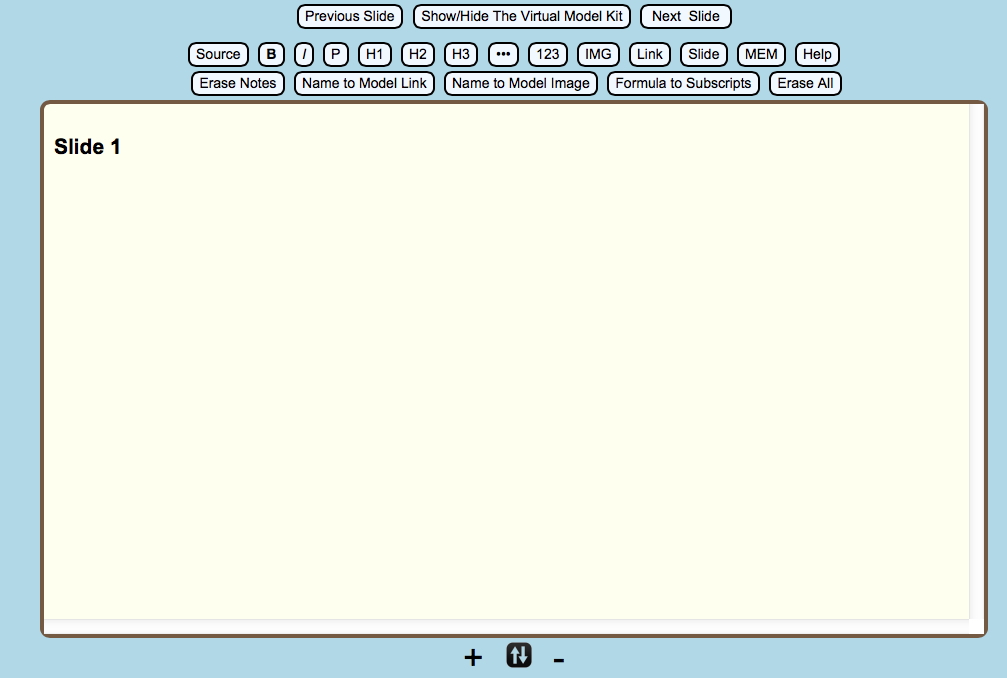ELNs (electronic laboratory notebooks) have been around for a long time in chemistry, largely of course due to the needs of the pharmaceutical industries. We did our first extensive evaluation probably at least 15 years ago, and nowadays there are many on the commercial market, with a few more coming from opensource communities. Here I thought I would bring to your attention the potential of an interesting new entrant from the open community.
My very first post on this blog six years ago related to incorporation of the Jmol molecular viewer into posts, and it has been a feature of many since. A little more than two years ago, Jmol was recast into JSmol. This had become possible because JavaScript engines built into modern web browsers were finally getting the sort of performance needed to display molecules (years and years ago, lets say ~1990, such display required very fancy hardware kit such as Silicon Graphics workstations). Around the same time, another well-established Java-based molecule sketcher, JME (Java molecular editor) also became JavaScript based. My own interest in this sort of Web-based behaviour actually crystallised last December, when I decided to refactor my own lecture notes into a tablet-friendly format using JSmol, with some questions directed at the formidably excellent Jmol discussion list. One of these related to how students might annotate such lecture notes with chemical sketches and store the results for future study or revision. Otis Rothenberger starting exploring various mechanisms for such local storage (using Web browsers), and in the last month or so has found a way of exploiting something called HTML5 local storage, which allows the sort of capacity needed. These three technologies have now come together on Otis’ site, which you can now view as CheMagic Notebook (this might be a .com site, but I believe the concept is very much open).
 Together with the Virtual model kit (VMK, itself now part of JSmol) this combination is starting to resemble a very interesting mechanism for creating an immersive lecture note environment, almost you might say a lecture note ecosystem. I would argue that for the first 30 years of the digital document era, most people preparing lecture notes became mesmerised (distracted?) by the need to print the outcomes with complete fidelity. It is only recently that the focus has turned to “beyond the PDF” (or beyond the PPT) and much richer mechanisms. So now we have lecture notes morphing into an ecosystem where:
Together with the Virtual model kit (VMK, itself now part of JSmol) this combination is starting to resemble a very interesting mechanism for creating an immersive lecture note environment, almost you might say a lecture note ecosystem. I would argue that for the first 30 years of the digital document era, most people preparing lecture notes became mesmerised (distracted?) by the need to print the outcomes with complete fidelity. It is only recently that the focus has turned to “beyond the PDF” (or beyond the PPT) and much richer mechanisms. So now we have lecture notes morphing into an ecosystem where:
- the objects themselves can be interactive (3D models, spectra, animations etc)
- or reference further models and associated data held in digital repositories
- or built from scratch in response to stimulation from peers, tutorials, workshops or lectures (using eg VMK or JME)
- and such annotations in effect themselves can be spliced into the student’s own copy of these notes,
- with the whole being regarded as a running notebook created from the initial seed of a lecturer’s materials augmented by the student’s own annotations.
I have focused here on where I started, i.e. refactoring my own lecture notes. But the above concepts could easily morph into eg a research project notebook, a rebundling into smaller segments which are themselves published into digital repositories (and there assigned their own persistent digital object identifiers) and ultimately further morphing into scholarly articles submitted to say a journal. These could represent a continuum, not discrete (and non-communicating) objects.
So will “lecture notes” actually start to change from their conventional (printable) form into something related to the above? Well, I have not addressed the largest hurdle preventing this; giving the content creators (i.e. the lecturers) the training, skills and most importantly the motivation to start to venture down this pathway. Otis has shown it should be technically possible. Come back and revisit this post in ten years time to see what actually did happen!
Tags: .com, chemical sketches, Java, JavaScript, lecturer, molecular editor, PDF, pharmaceutical industries, Silicon Graphics, three technologies, web browsers, Web-based behaviour